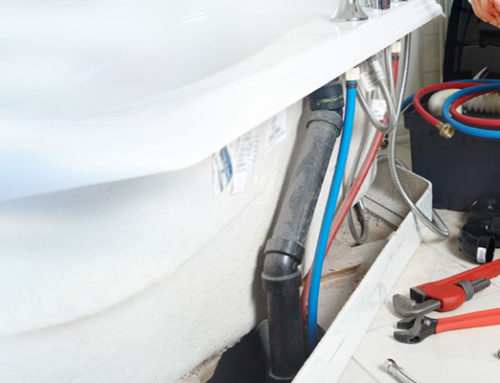Have you started noticing that after a load of washing your whites and light clothes are coming out not quite as bright as you’d like? Or even that your washing machine in general just isn’t as effective as it used to be? These are all signs that your washing machine is due for a good clean.
We all know how important it is to clean other appliances throughout the house like our ovens, dishwashers, and the lint catchers in our dryers, but not many households put the washing machine on their spring clean list.
Our washing machines are where we put all of our dirty clothes, bed sheets, and towels, which can all be covered in bacteria, germs, and food scraps – especially if you have small children! So it only makes sense to sanitise and clean the drum regularly, and to make sure that no bad smells are building up in the drains and pipes. Taking the time to deep clean the washing machine is especially important for those families who tend to only run cold water cycles.
So exactly how do you clean a washing machine? While you can run an empty cycle on hot water to give your machine’s drum and pipes a good rinse, we recommend doing our 3-step deep clean every few months.
Step 1. Soak the fabric softener/washing detergent container.
A build-up of leftover detergent and fabric softener can cause mould or limescale to form in your detergent container, which can then run into your cycle and cause unpleasant smells. Cleaning the container is as simple as popping it out of your washing machine and soaking it in warm water. You can also use a cloth or toothbrush to remove any stubborn residue or build up. Just make sure to dry the drawer thoroughly before putting it back into your washing machine.
Step 2. Put your washing machine throw a deep clean cycle.
While you can buy special Dettol or Pine O Clean washing machine cleaner from your local supermarket, it’s also quick, easy and cost-effective to make your own at home. All you’ll need is:
- 2 cups vinegar
- 1/4 cup bicarb of soda
- 1/4 cup water
Mix the bicarb soda and water together and it to the detergent container. Then pour the vinegar into the drum, and run a hot water cycle.
Step 3. De-clog the Filter
Ever lost a button during a wash? Or maybe you forgot to empty your pockets before through your jeans in for a wash? A clogged washing machine filter can cause a serious blockage and mean that your drum won’t drain properly. All you need to do is turn off your machine, and its water supply, and remove the filter, which you can find by referring to your user manual. Then simply discard anything that has got caught in your filter.
It’s that quick and easy but something every household should add to their spring clean list.
Looking for a few more ways to look after and prolong the life of your washing machine? Here are some more of our handy washing machine tips:
- Make sure you machine is level. It’s only normal for your washing machine to move while running through a cycle so it’s a good idea every few months to check that it’s still level and adjust your machines legs if needed.
- Don’t overload your washer. Something most of us are guilty of -especially when we’re in a rush or have a big pile of laundry to get through! And while we know overloading your machine can put a big strain on it’s motor, it can also mean that the washing detergent won’t be distributed evenly and your clothes may not get the proper wash they need.
- Leave the door/lid ajar after a wash cycle. Letting the drum completely dry from any leftover moisture will help prevent smells and the chance of mildew and mould. While it’s a straight forward as leaving the door open on a front loader, those with top loaders may have to use a small object to prop the lid open.
- Don’t go overboard with the detergent. Most detergents available today are quite concentrated, meaning a little goes a long way. If you are continually using too much detergent it could break down the fabric of your clothing and start wearing your machine out faster. A great way to find out if you’re using too much detergent is to run a hot water cycle with four or five clean towels, but don’t add any detergent to the load. Pause the load during the wash and check if you can see any suds on the towels, which will indicate there is detergent being left in your drum from previous wash cycles.
Looking for even more helpful household tips and tricks? Then be sure to check out more of our blogs here.







